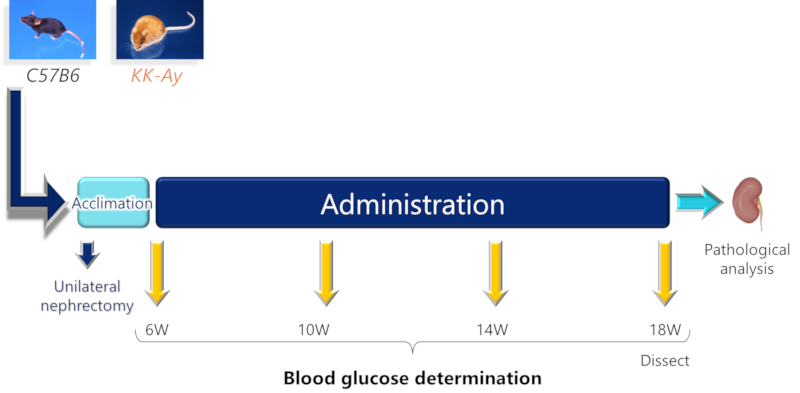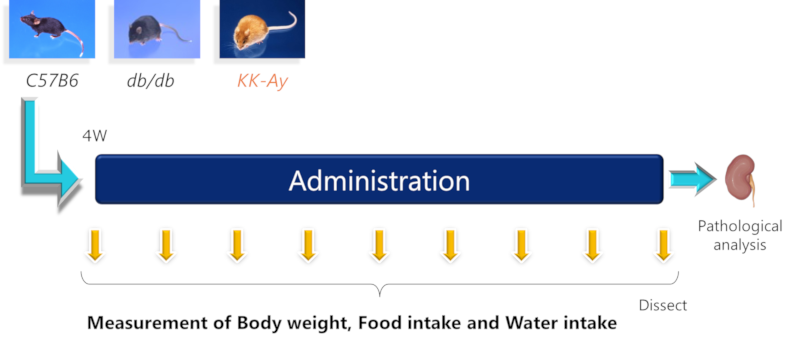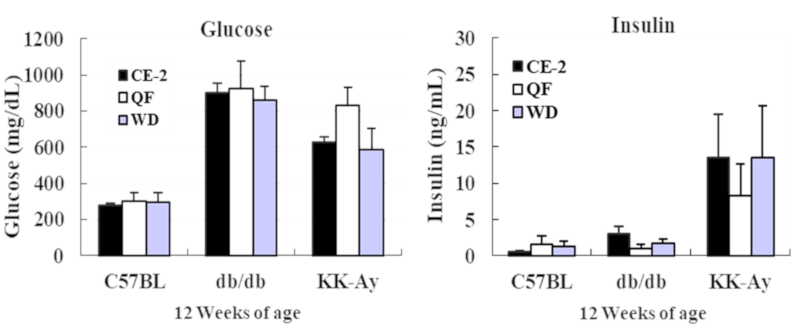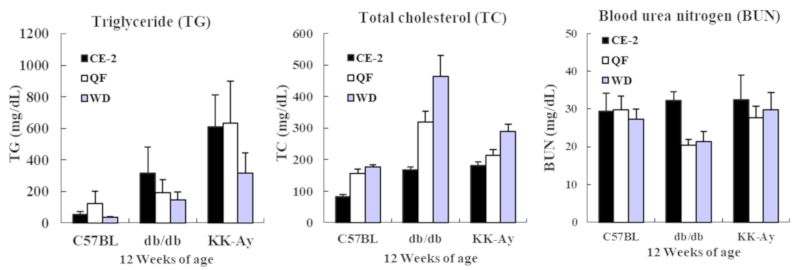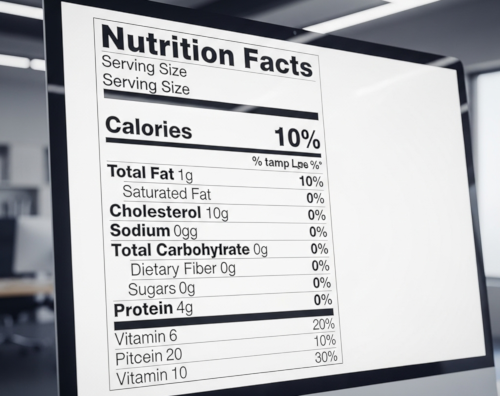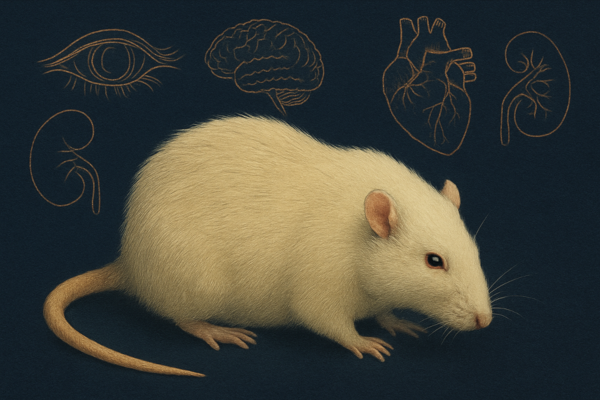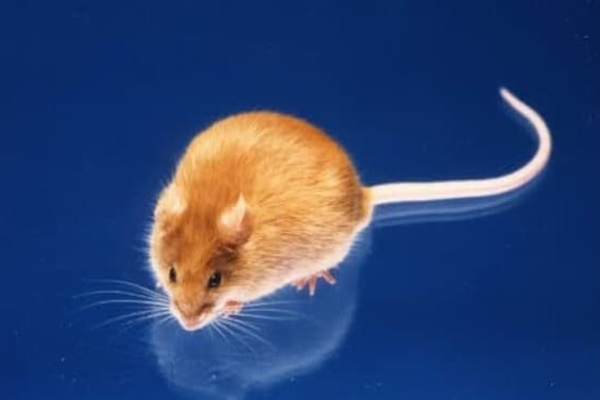
KK-Ay mouse is suitable as a diabetic nephropathy animal model by using two experimental methods.
We established two methods to make a diabetic nephropathy model for KK-Ay mice as below:
| Table of contents: ■ Inducing method1: Unilateral nephrectomy (Nx) with salt supplementation |
By the above 2 methods, diabetic nephropathy was established and expedited in KK-Ay mice. KK-Ay mouse should be useful as a diabetic nephropathy animal model to evaluate basic and drug efficacy studies.
*QF: Quick Fat (QF) is a high-fat diet for diabetes and obesity research supplied by CLEA Japan, inc. →QF product page
*WD: Western Diet (WD) is a special diet containing 2% cholesterol added to QF.
Inducing method 1: Nx and salt supplementation
Diabetic nephropathy was observed early in KK-Ay mice by executing unilateral Nx and salt supplementation. Hyperglycemia persisted after nephrectomy, gene expression and histopathological analysis confirmed renal complications.
Study design:
These mice were divided into six groups. Not only Nx but also with salt supplement groups were set and observed the effects by salt supplementation additionally.
| Name of group | Animal | Feed | water | |
| Group 1 | Cont | C57B6 | CE-2 | water |
| Group 2 | Cont-Nx | C57B6 | CE-2 | water |
| Group 3 | Cont-Nx+NaCl | C57B6 | CE-2 | 0.9%NaCl |
| Group 4 | KKAy | KK-Ay | CE-2 | water |
| Group 5 | KKAy-Nx | KK-Ay | CE-2 | water |
| Group 6 | KKAy-Nx+NaCl | KK-Ay | CE-2 | 0.9%NaCl |
The 45th Japanese Society of Toxicology (2018)
Result
Body weight, food intake, water intake, and blood glucose level
Diabetic symptoms were significantly expressed in all KK-Ay mouse groups.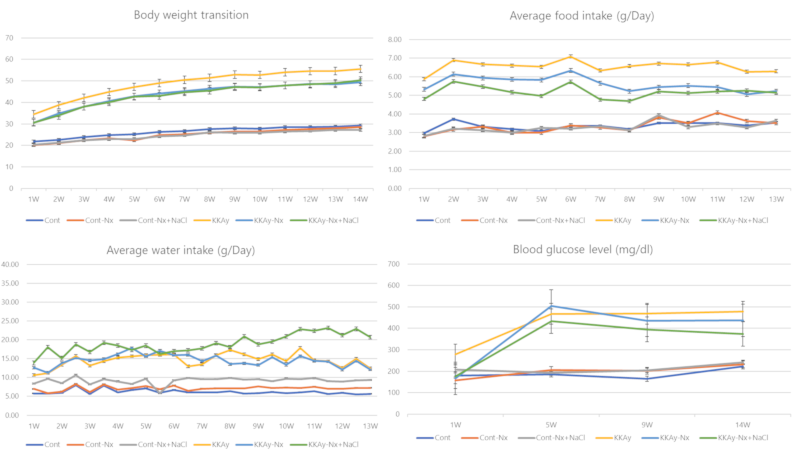
The 45th Japanese Society of Toxicology (2018)
Kidney biopsy
Renal hypertrophy was confirmed in the KK-Ay-Nx and KK-Ay-Nx + NaCl groups.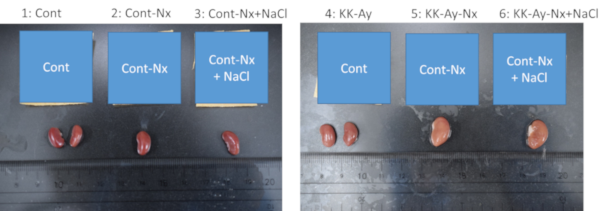
The 45th Japanese Society of Toxicology (2018)
Final body weight (g), Absolute organ weight・Kidney (g), and Relative organ weight・Kidney (mg) analysis.

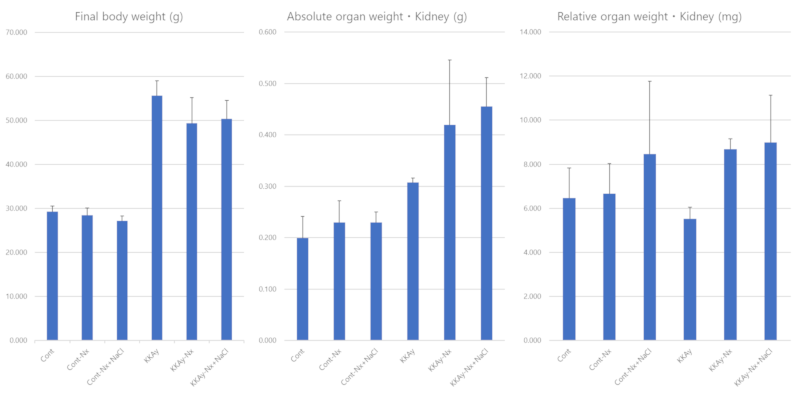
The 45th Japanese Society of Toxicology (2018)
Plasma biochemical analysis
Increasing plasma triglyceride, cholesterol, glucose and urea nitrogen levels were confirmed in the KK-Ay-Nx and KK-Ay-Nx + NaCl groups.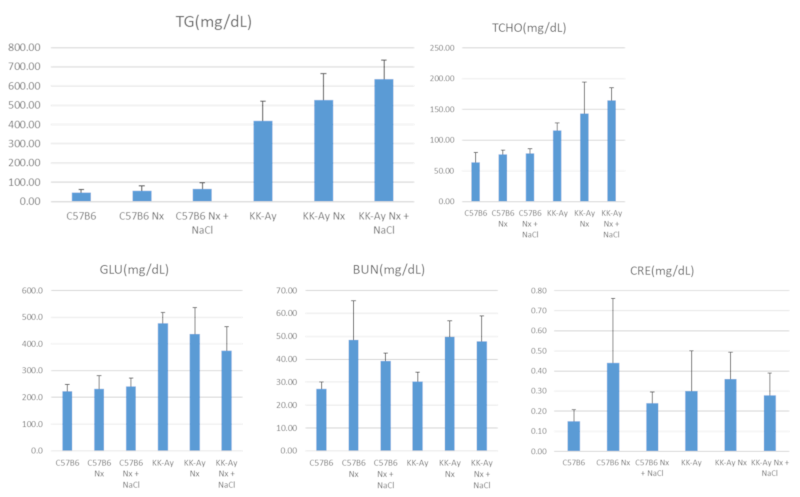
The 45th Japanese Society of Toxicology (2018)
F4/80 staining
Increasing of mature macrophages were confirmed that was suggested an enhanced inflammatory response.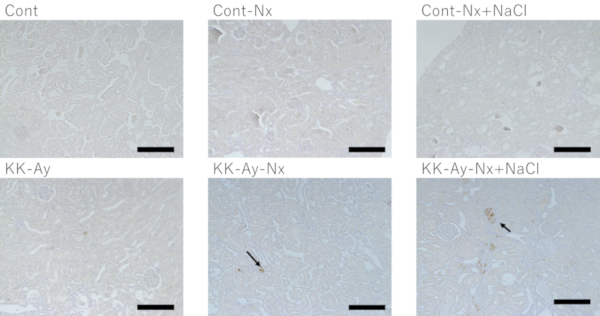
The 45th Japanese Society of Toxicology (2018)
αSMA staining
αSMA-positive cells were confirmed that was suggested the presence of myofibroblasts.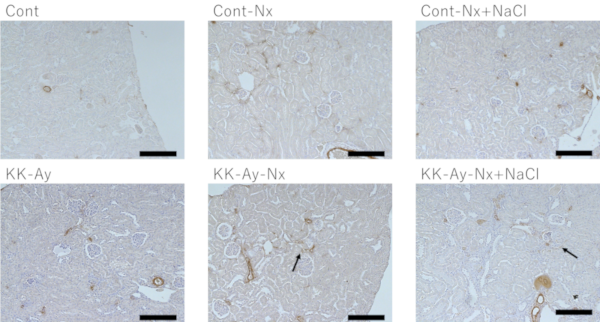
The 45th Japanese Society of Toxicology (2018)
Gene expression analysis
Upper: Fibrosis-related genes
Lower: Inflammation-related genes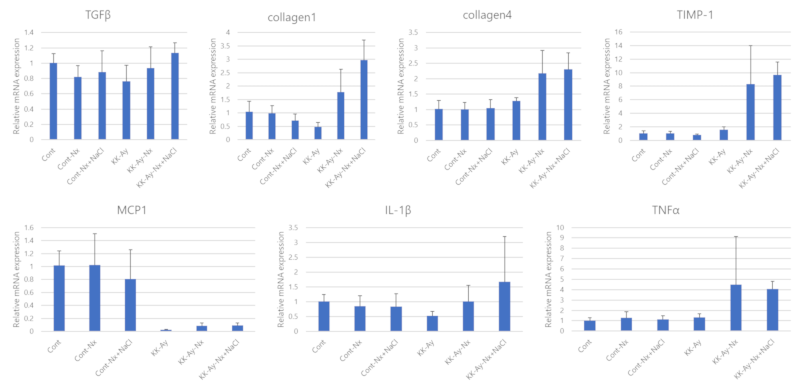
The 45th Japanese Society of Toxicology (2018)
Correlation diagram (Pathology-Genes)
In the KK-Ay-Nx and the KK-Ay-Nx+NaCl group, increasing IL-1β, TIMP-1, TNFα and type 1 collagen were confirmed.
The pathological scoring also showed the positive correlation results with gene expression.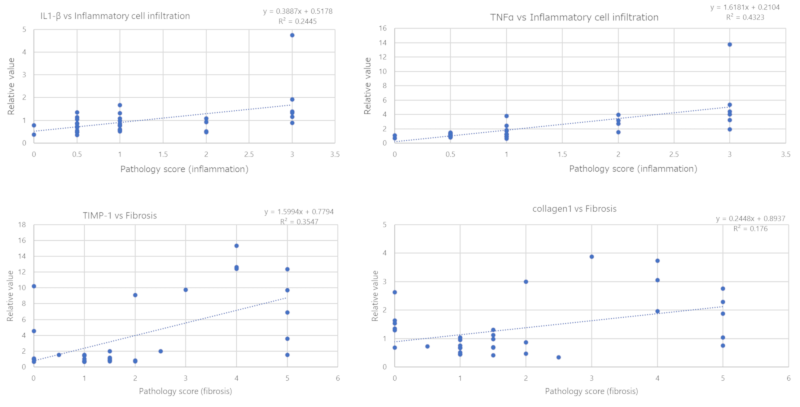
The 45th Japanese Society of Toxicology (2018)
Histopathological analysis
The characteristics of diabetic nephropathy could be seen each place.
- Glomerulus: Mesangium hyperplasia
- Tubules: degeneration, dilation, Armanni-Ebstein degeneration, urinary cast
- Interstitium: αSMA-positive cells, increased macrophages, significant inflammatory cell infiltration and fibrosis
HE staining
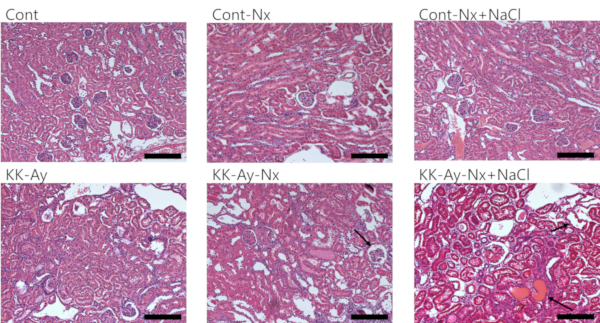
The 45th Japanese Society of Toxicology (2018)
SR staining
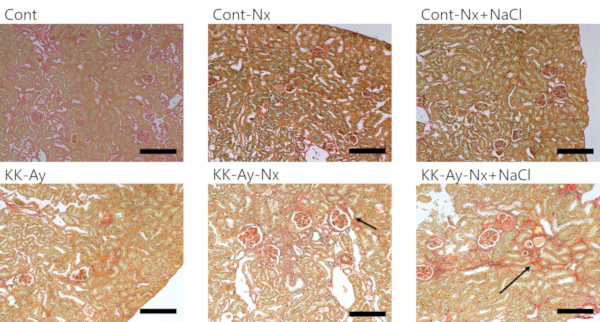
The 45th Japanese Society of Toxicology (2018)
PAS staining
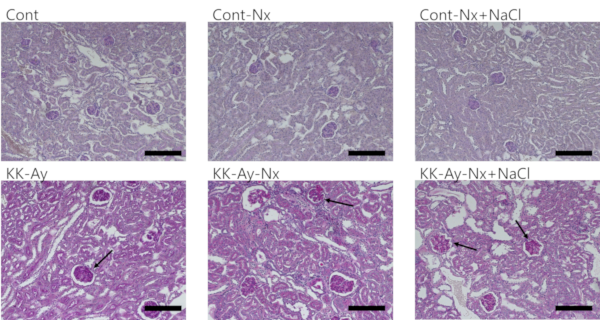
The 45th Japanese Society of Toxicology (2018)
Nx+NaCl KK-Ay mice had diabetic nephropathy symptoms close to humans. It is represented a useful model to evaluate drug targeting diabetic nephropathy.
If you are interested, please feel free to contact us from below.
Inducing method 2: Diet inducing (QF and WD)
Both type 2 diabetic models, KK-Ay and db/db mouse, were fed QF and WD and compared the effects on the diabetic renal complications. C57BL/6JJcl mice were used as control animals.
In result, KK-Ay mice showed a higher degree of insulin resistance than db/db mice. In addition, high-fat diet expedited their nephropathy symptoms.
Study design
9 groups were set. Fed CLEA Japan diet CE-2, QF and WD.
| Animal | Feed | |
| Group 1 | C57B6 | CE-2 |
| Group 2 | C57B6 | QF |
| Group 3 | C57B6 | WD |
| Group 4 | db/db | CE-2 |
| Group 5 | db/db | QF |
| Group 6 | db/db | WD |
| Group 7 | KK-Ay | CE-2 |
| Group 8 | KK-Ay | QF |
| Group 9 | KK-Ay | WD |
The 45th Japanese Society of Toxicology (2018)
Body weight and biochemical analysis
KK-Ay mice gained weight without reducing food intake even they were fed cholesterol-added diet. It also showed a high degree of insulin resistance compared to db/db mice.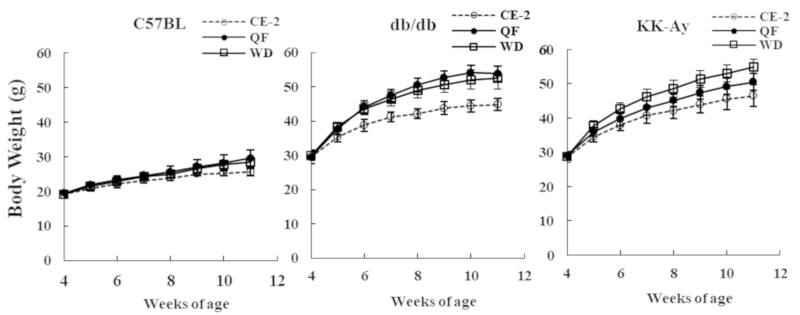
The 47th Japanese Society of Toxicology (2020)
Food intake
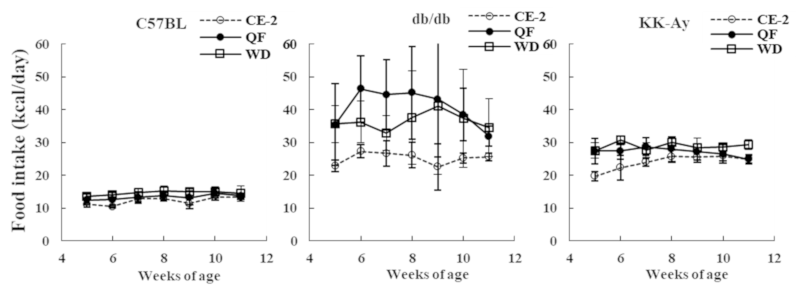
The 47th Japanese Society of Toxicology (2020)
Blood biochemistry
The 47th Japanese Society of Toxicology (2020)
Urinary protein

The 45th Japanese Society of Toxicology (2018)
Analysis of histopathology
PAS staining
Only QF-fed KK-Ay mice had significant glomerular lesion, inflammation, and tubular interstitium.
▼ KK-Ay+QF Group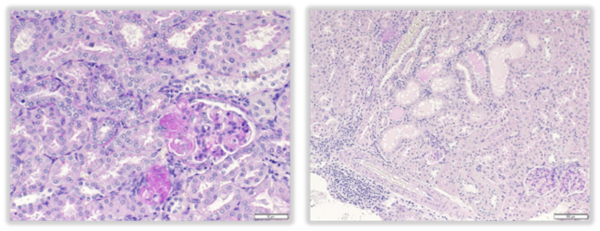
The 47th Japanese Society of Toxicology (2020)

The 47th Japanese Society of Toxicology (2020)
KK-Ay mice showed lower blood glucose and cholesterol levels than db/db mice but significantly higher than control mice. KK-Ay could be considered as a useful animal model enough for observing diabetic symptoms and complications.
In addition, KK-Ay mice showed a higher insulin resistance level and more enhanced nephropathy by high-fat diet than db/db mice. It could be considered KK-Ay mouse is a new model of diabetic nephropathy that could evaluate short-term drug efficacy more than db/db mouse.
Product pages:
Promotion:
Inquiry
If you have any question, please feel free to contact us from below.


